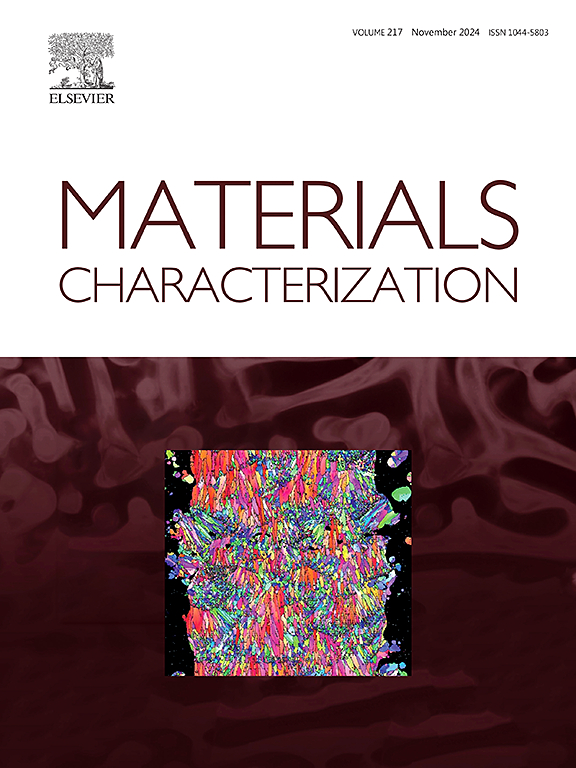Simultaneously enhancing mechanical and bonding property of Cu-Ni-Si/1010 steel bimetal laminated composites via annealing
IF 4.8
2区 材料科学
Q1 MATERIALS SCIENCE, CHARACTERIZATION & TESTING
引用次数: 0
Abstract
Annealing is an effective method for improving mechanical properties of bimetallic laminated composites (BLCs). The temperatures of 400 °C, 450 °C, 500 °C, and 550 °C were selected to investigate microstructure evolution and mechanical behaviors of Cu-Ni-Si/1010 steel BLC. Microstructure analysis shows that the size and volume fraction of nano-strengthening δ-Ni2Si phase increase with temperature in Cu-Ni-Si. Annealing ameliorates the elemental enrichment at the interface by promoting the diffusion of Ni and Si elements into 1010 steel. The uniaxial tensile results indicate that yield strength, ultimate tensile strength, and elongation of BLCs increase first and then decrease with increasing annealing temperature. The strength improvement is attributed to the enhanced precipitation strengthening of Cu-Ni-Si and heterogeneous deformation-induced strengthening, and the ductility improvement results from the increased plastic deformation ability of 1010 steel. Tensile shear test indicates that fracture occurs at the Cu-Ni-Si side when the annealing temperature is below 450 °C, and when the temperature is higher than 500 °C the interface begins to debond. The thickening of the diffusion layer and the strengthening of Cu-Ni-Si with increasing temperature enhance the shear strength, however, excessively high temperatures lead to the formation of interfacial voids, resulting in the weakening bonding strength. Overall, the BLC after annealing at 450 °C exhibits the excellent mechanical performance. This study provides a new approach for enhancing the strength and plasticity of BLCs that are not suitable for deformation.
求助全文
约1分钟内获得全文
求助全文
来源期刊

Materials Characterization
工程技术-材料科学:表征与测试
CiteScore
7.60
自引率
8.50%
发文量
746
审稿时长
36 days
期刊介绍:
Materials Characterization features original articles and state-of-the-art reviews on theoretical and practical aspects of the structure and behaviour of materials.
The Journal focuses on all characterization techniques, including all forms of microscopy (light, electron, acoustic, etc.,) and analysis (especially microanalysis and surface analytical techniques). Developments in both this wide range of techniques and their application to the quantification of the microstructure of materials are essential facets of the Journal.
The Journal provides the Materials Scientist/Engineer with up-to-date information on many types of materials with an underlying theme of explaining the behavior of materials using novel approaches. Materials covered by the journal include:
Metals & Alloys
Ceramics
Nanomaterials
Biomedical materials
Optical materials
Composites
Natural Materials.
 求助内容:
求助内容: 应助结果提醒方式:
应助结果提醒方式:


